The big Go match came to an exciting conclusion. The computer won the first three (out of five) games, thereby winning the match, against Go world champion Lee Sedol. In the press conference after the third game the tenor was that it was impressive that Sedol was able to compete as strongly as he had, given the handicap of a mere human brain to work with. But then Sedol won game four! Yay humanity! It even looked like he was on his way to winning game five as well, after poor opening play by the computer. But the beast rallied and managed a come from behind win.
One thing that became clear to me as I followed the live broadcasts is that Go has it all over chess as a spectator sport. The rules of Go are surprisingly simple, meaning even an amateur player can follow the action without too much difficulty, and the game is such that it cannot end in a draw. There are also plenty of tactics in every game, as groups of stones compete in life or death struggles. It's thrilling stuff, especially with a good commentator to explain the action to you.
In other news, I was in Franklin, Indiana this weekend participating in an MAA section meeting. I was the banquet speaker, meaning I was basically the after-dinner entertainment. It seemed to go over well. But since I'm still recovering from the ordeal that is modern air travel, I've chosen a fairly straightforward problem for you this week.
Straightforward, but long. The position below calls for selfmate in twenty-three moves. It was composed by Milan Vukcevich in 1992.
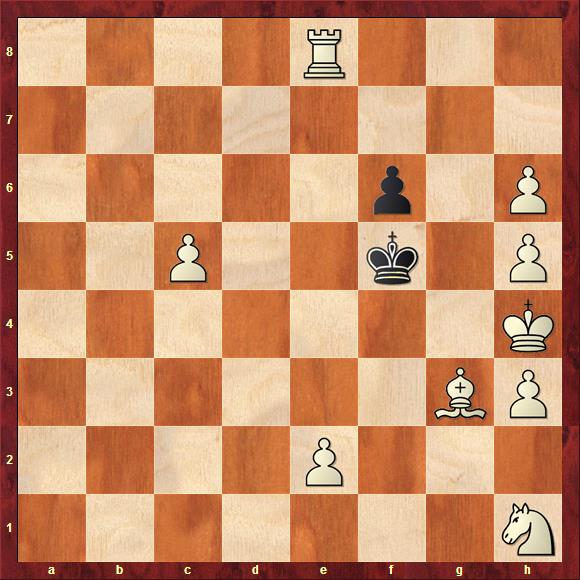
Recall that in a selfmate, white plays first and forces black to give checkmate in no more than the stipulated number of moves. Black, for his part, will do everything in his power to avoid giving mate. It's a complete inversion of normal chess logic!
Let's consider the diagram. If white could teleport his knight to g5 then we'd be done. Black's only move in that position would be to take the knight with his pawn, thereby giving mate. Black, for his part, is pretty well tied up. So white must escort his knight to g5 while avoiding stalemate and ensuring that the black king does not escape. The manner by which he does that is ingenious, but straightforward, so let's just get to the solution.
1. Bf2 Kf4 2. Be3+ Kf5 3. Bg1 Kf4
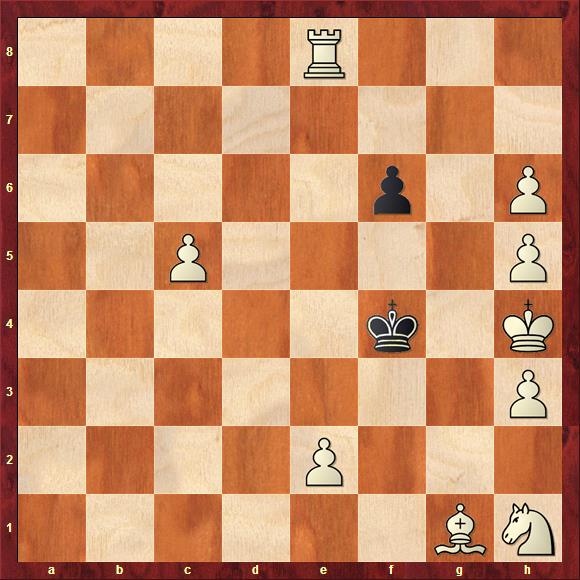
4. Bh2+ Kf5 5. Ng3+ Kf4 6. Nf1 Kf5

Now we see white's plan. The knight is able to progress towards his goal by cutting off the bishop at certain key moments. White will need to repeat this idea twice more to achieve his goal. The arrangement of knight and bishop, in which a move by the knight discovers check from the bishop, is referred to as a battery.
7. Bg1 Kf4 8. Be3+ Kf5 9. Bf2 Kf4
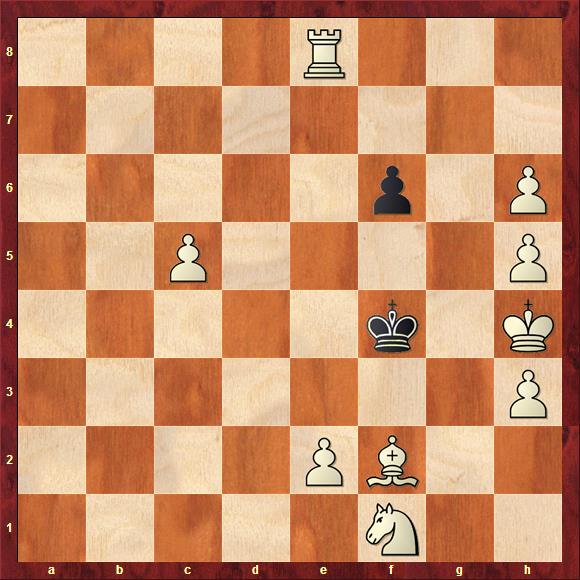
10. Bg3+ Kf5 11. Be1 Kf4 12. Bd2+ Kf5
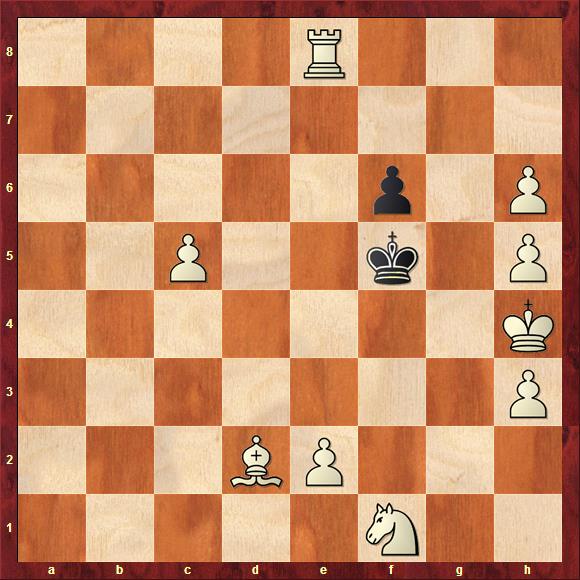
White is now ready to implement his second battery.
13. Ne3+ Kf4 14. Nc4+ Kf5 15. Ba5 Kf4
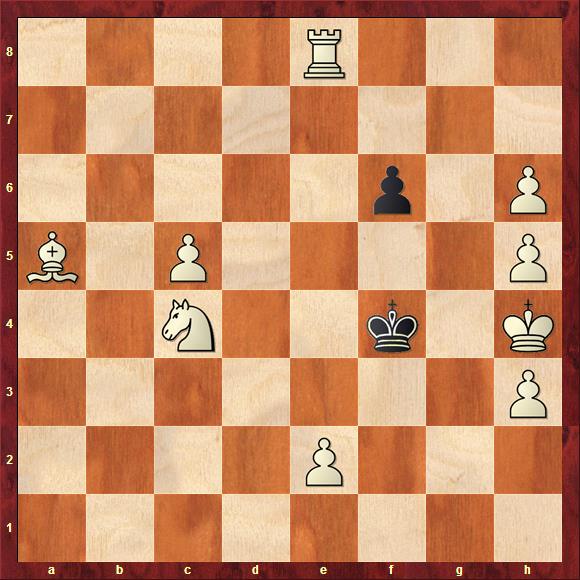
And here comes the third:
16. Bc7+ Kf5 17. Nd6+ Kf4 18.Nf7+ Kf5
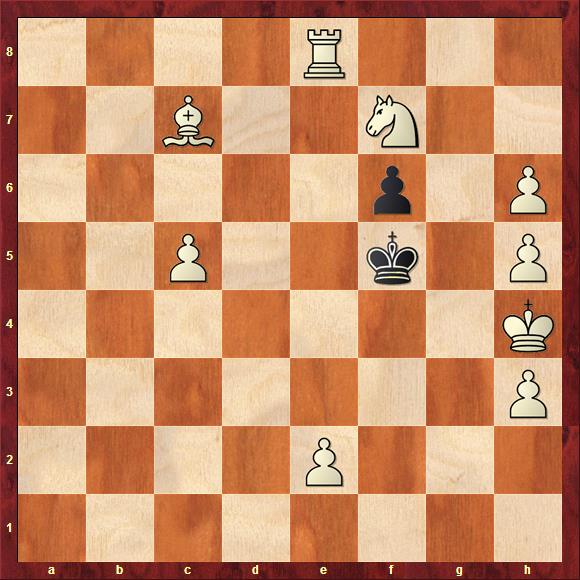
Success! The white knight is now poised to jump into g5. White just needs to get his bishop back home before delivering the coup de grace.
19. Ba5 Kf4 20. Bd2+ Kf5 21. Be1 Kf4
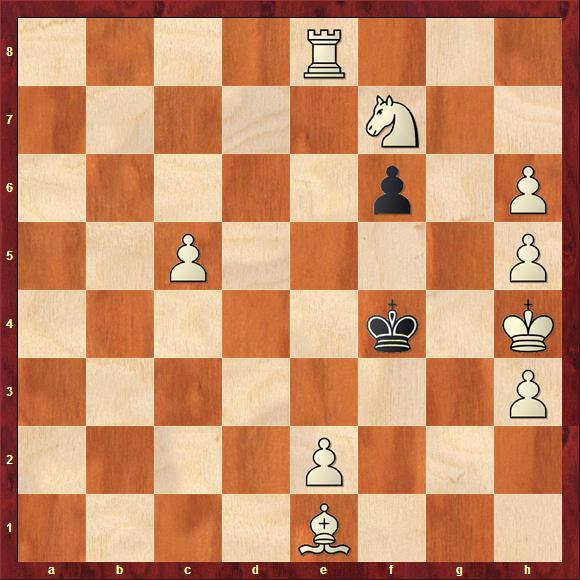
22. Bg3+ Kf5 23. Ng5 fxg5 mate

Very nice. See you next week!

What a nice wandering minor piece display! A caissic dance routine.
As for the go match, I really wonder what the effect will be on Sedol. I can hardly imagine how crushing such a loss to a machine would be to someone who has earned a rightfully exalted status in his chosen realm.
I'm not sure how crushing this will really be for Sedol. I think the idea of computers beating humans at games like chess and Go is now so commonplace that it mostly just merits a shrug at this point.
I'd be more concerned about the implications of using computers to cheat than anybody's ego being crushed; I understand that's an increasingly worrying problem in chess too.